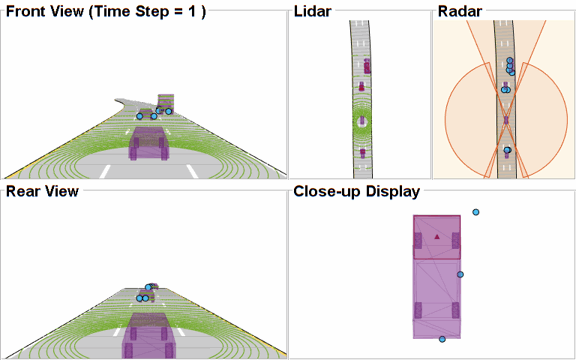Calibration and Sensor Fusion
Most modern autonomous or semi-autonomous vehicles are equipped with sensor suites that contain multiple sensors. It is necessary to develop a geometric correspondence between these sensors, to understand and correlate output data. Rotational and translational transformations are required to calibrate and fuse data from these sensors. Fusing lidar data with corresponding camera data is particularly useful in the perception pipeline. The lidar and camera calibration (LCC) workflow serves this purpose. It uses the checkerboard pattern calibration method. To learn more, seeWhat Is Lidar-Camera Calibration?.
激光雷达工具箱™算法提供的功能to extract checkerboard features from images and point clouds and use them to estimate the transformation between camera and lidar sensor. The toolbox also provides downstream LCC functionalities, projecting lidar points on images, fusing color information in lidar point clouds, and transferring bounding boxes from camera data to lidar data. All of these functionalities have been integrated into theLidar Camera Calibratorapp. Using the app, you can interactively calibrate the sensors.
Apps
| Lidar Camera Calibrator | Interactively estimate rigid transformation between lidar sensor and camera |
Functions
Topics
- What Is Lidar-Camera Calibration?
Integrate lidar and camera data.
- Calibration Guidelines
These guidelines can help you achieve accurate results for lidar-camera calibration.
- Get Started with Lidar Camera Calibrator
Interactively calibrate lidar and camera sensors.
- Read Lidar and Camera Data from Rosbag File
This example shows how to read and save images and point cloud data from a rosbag file.




